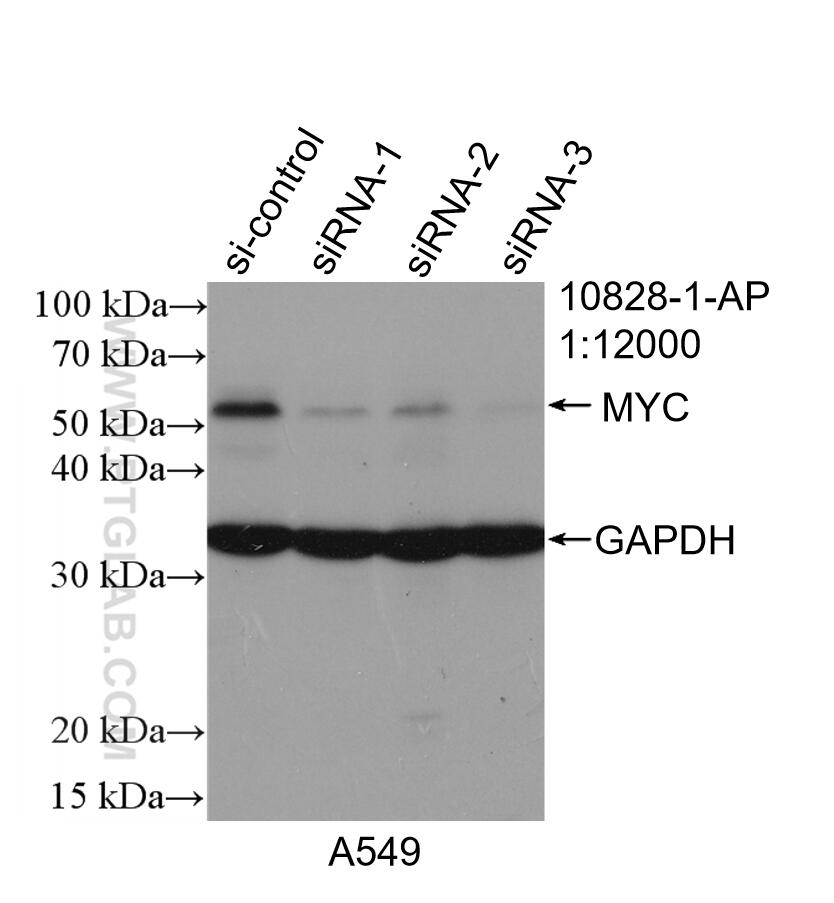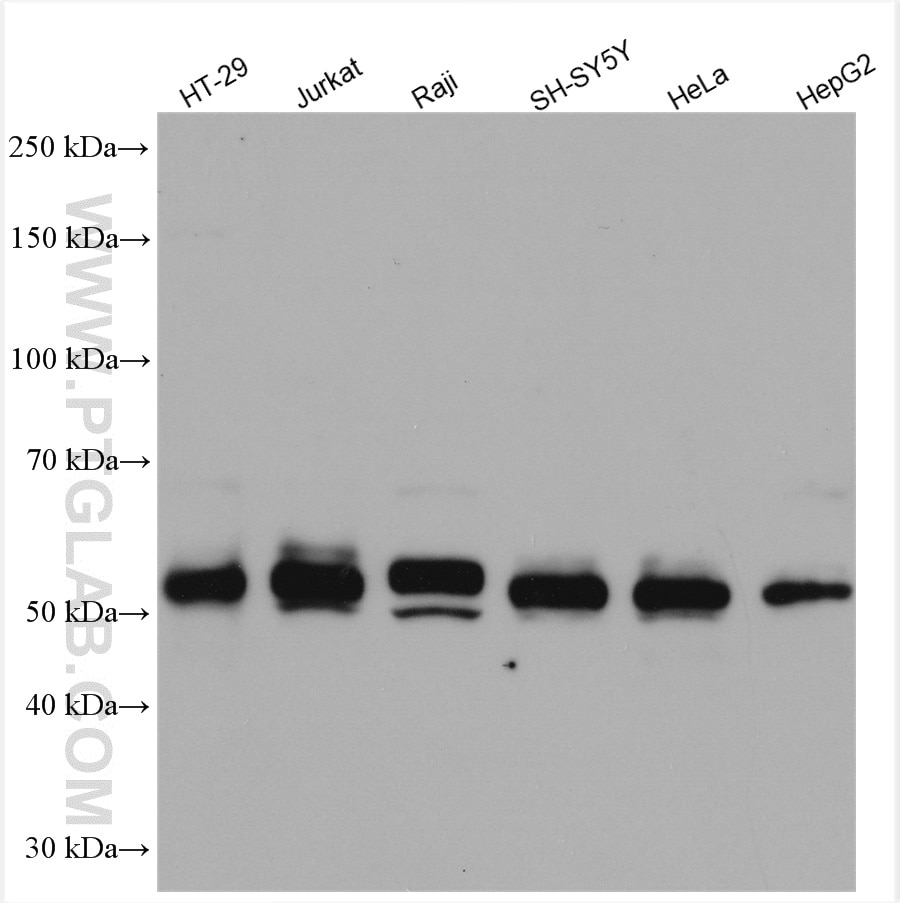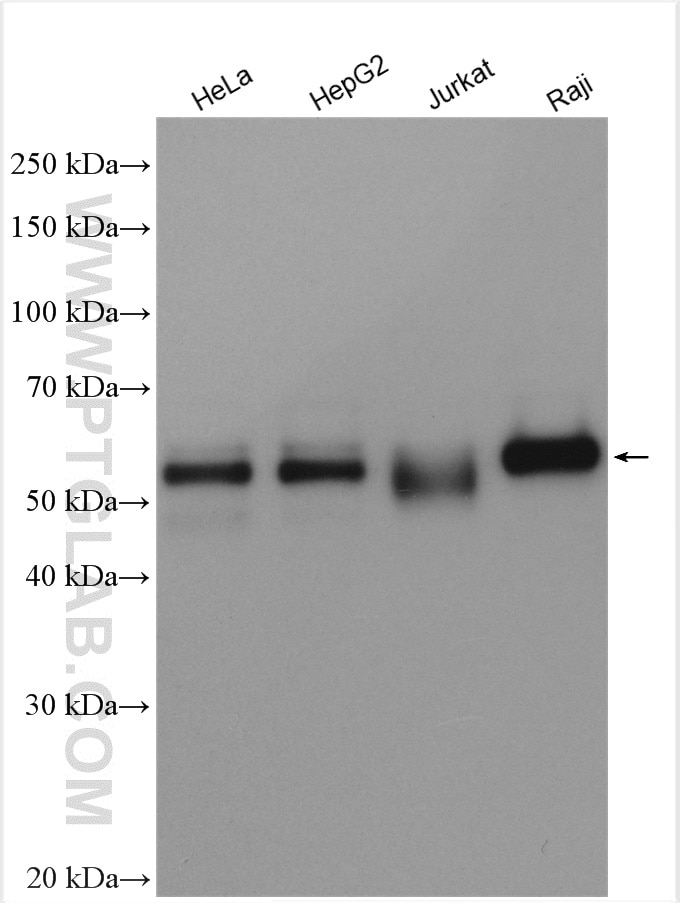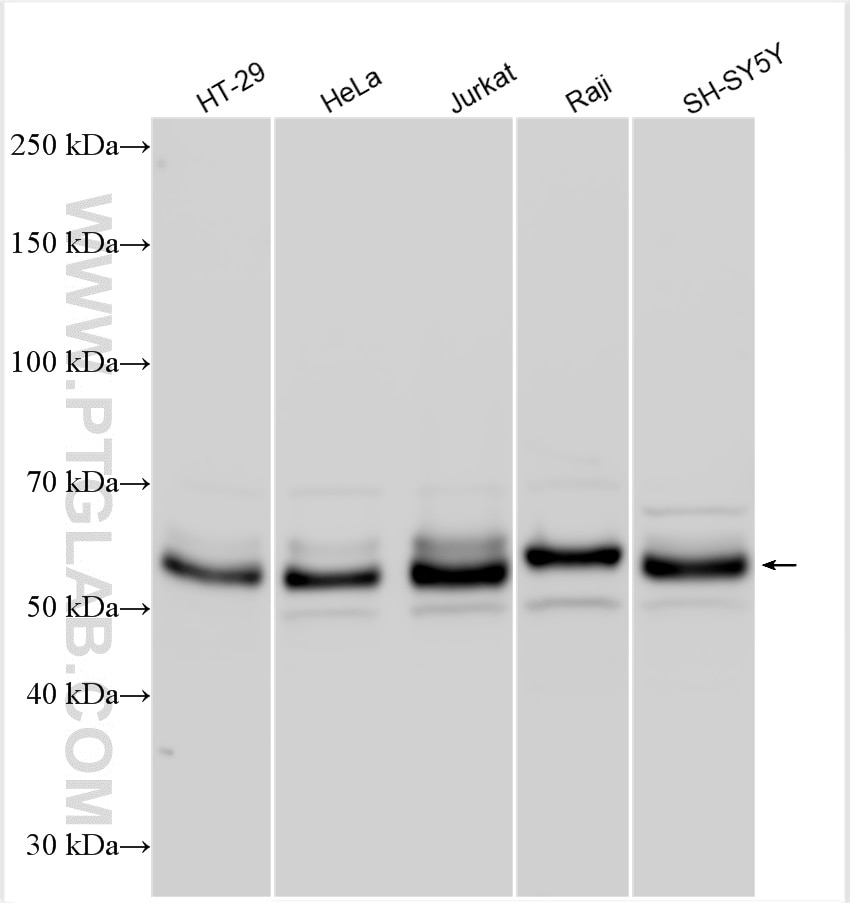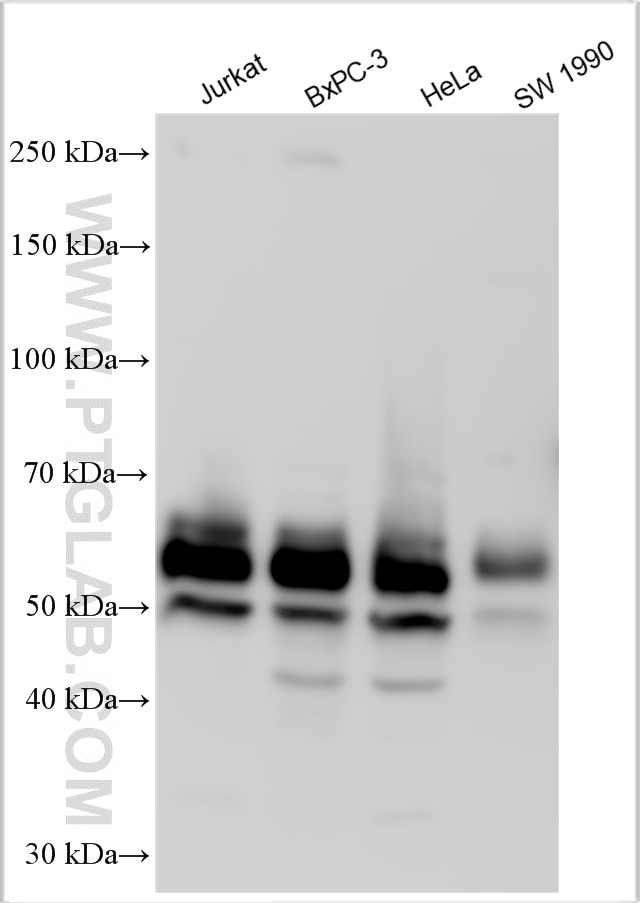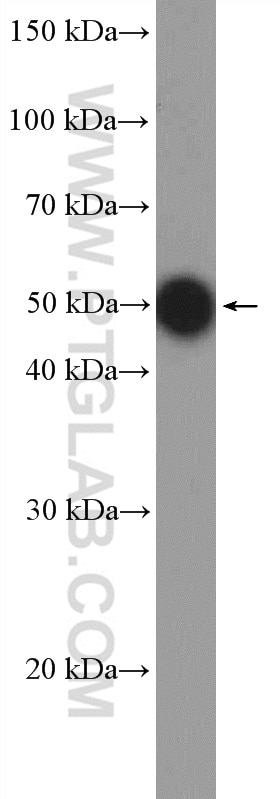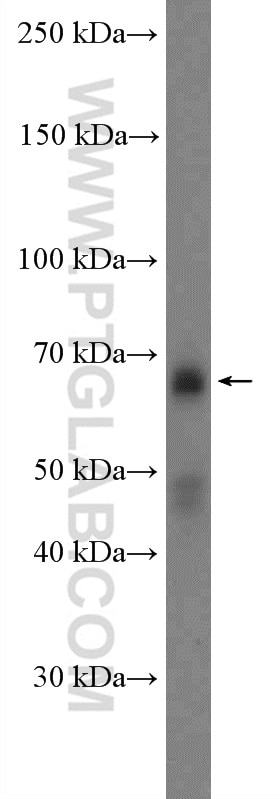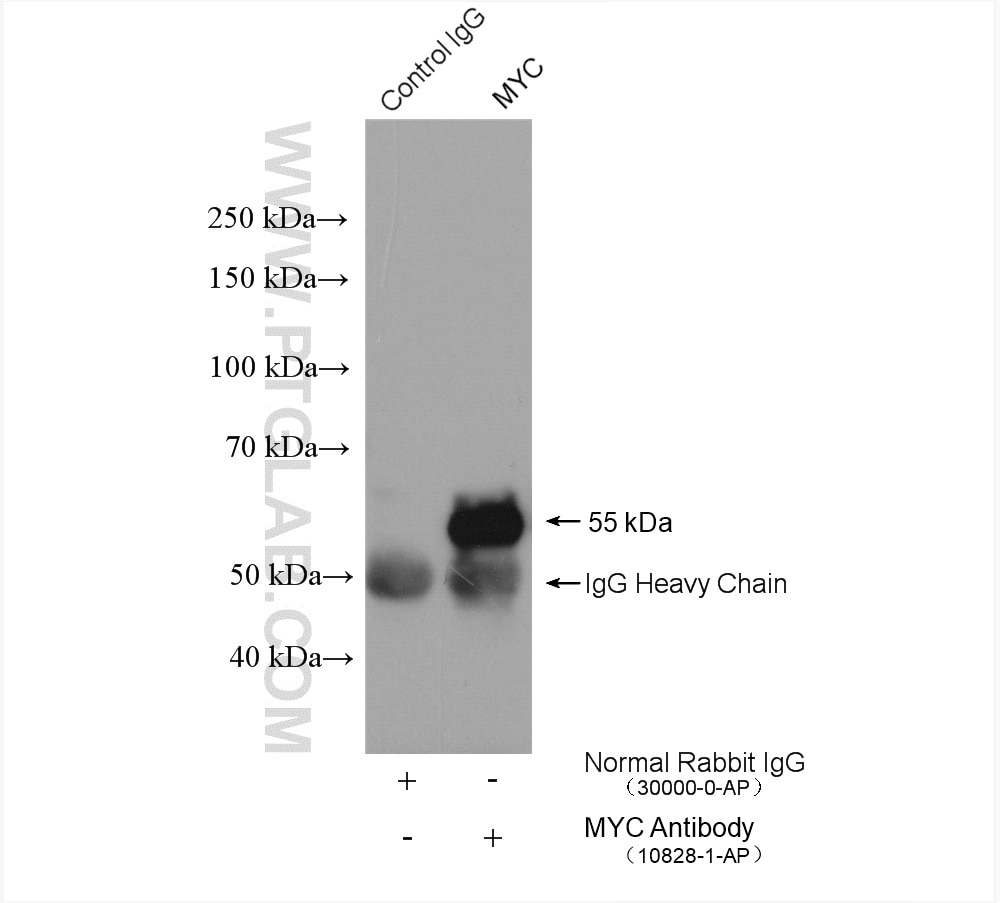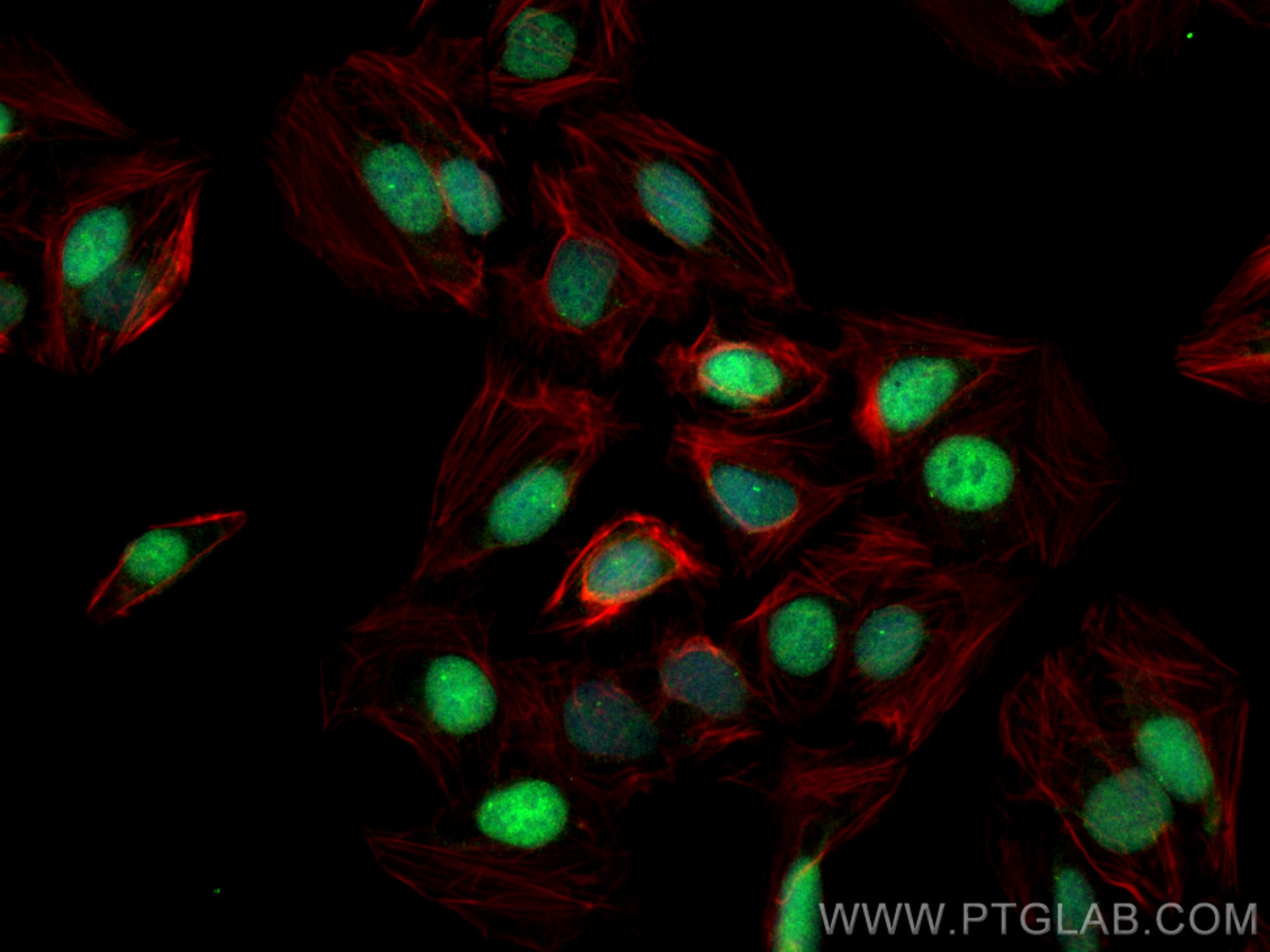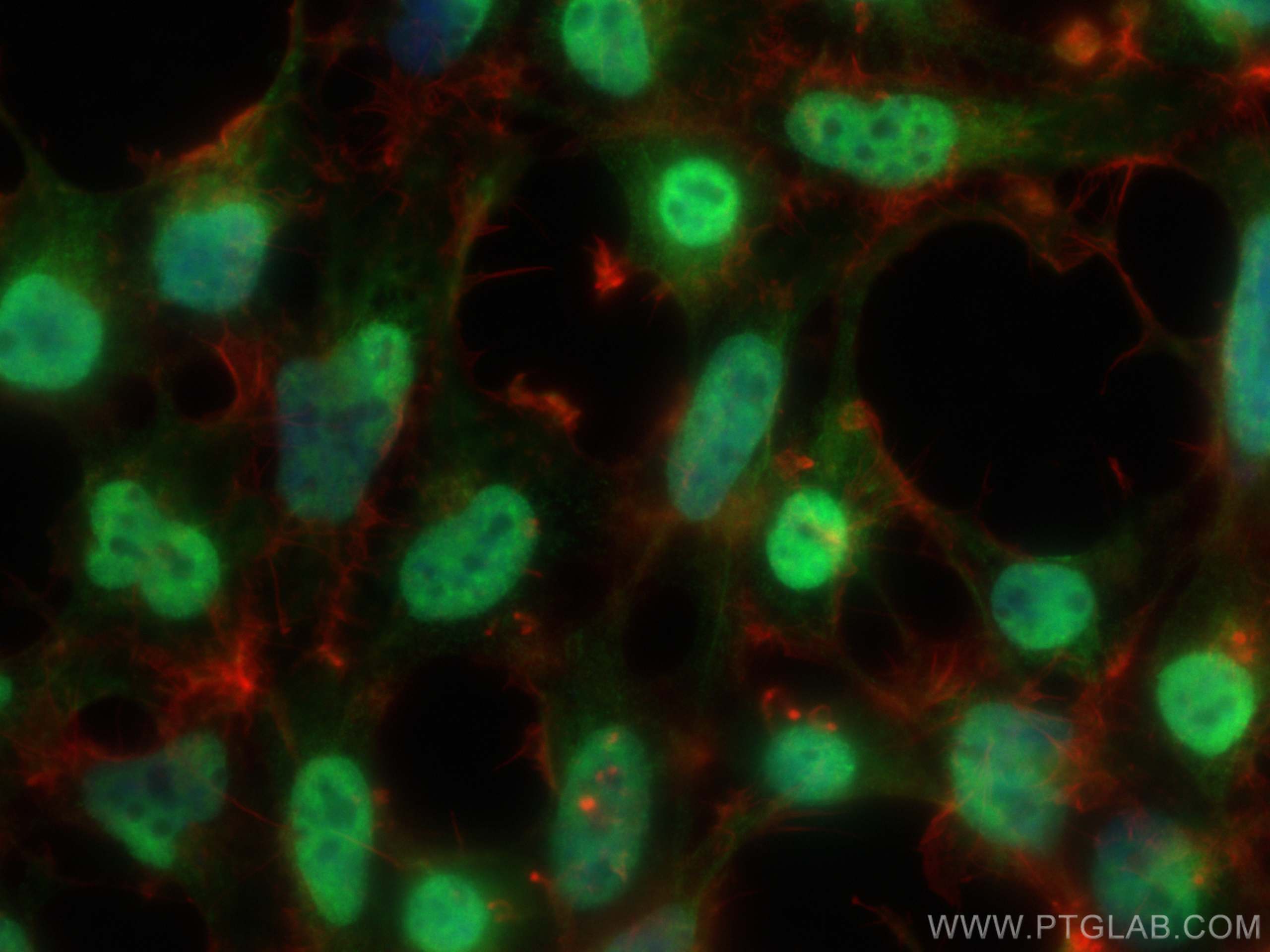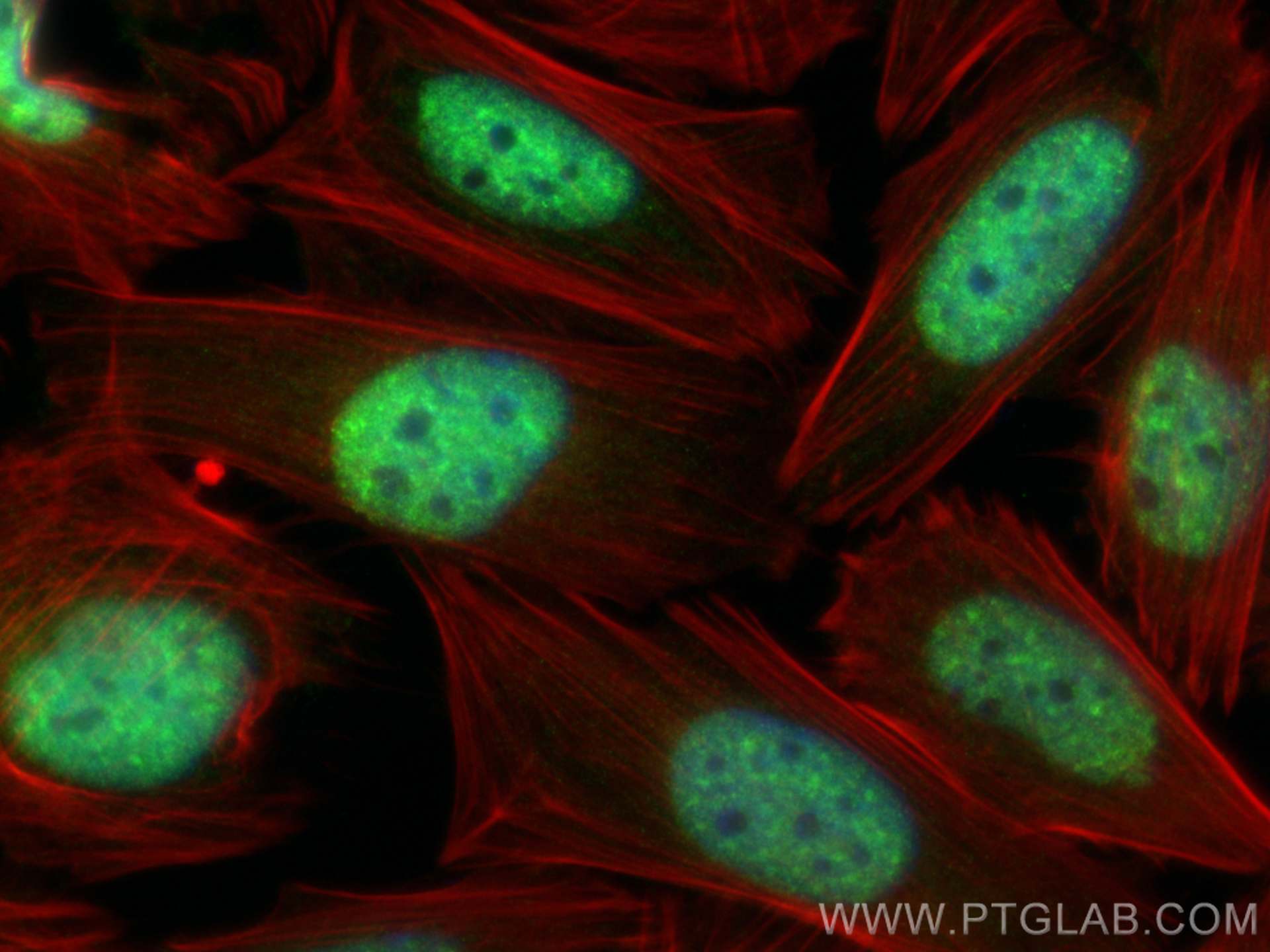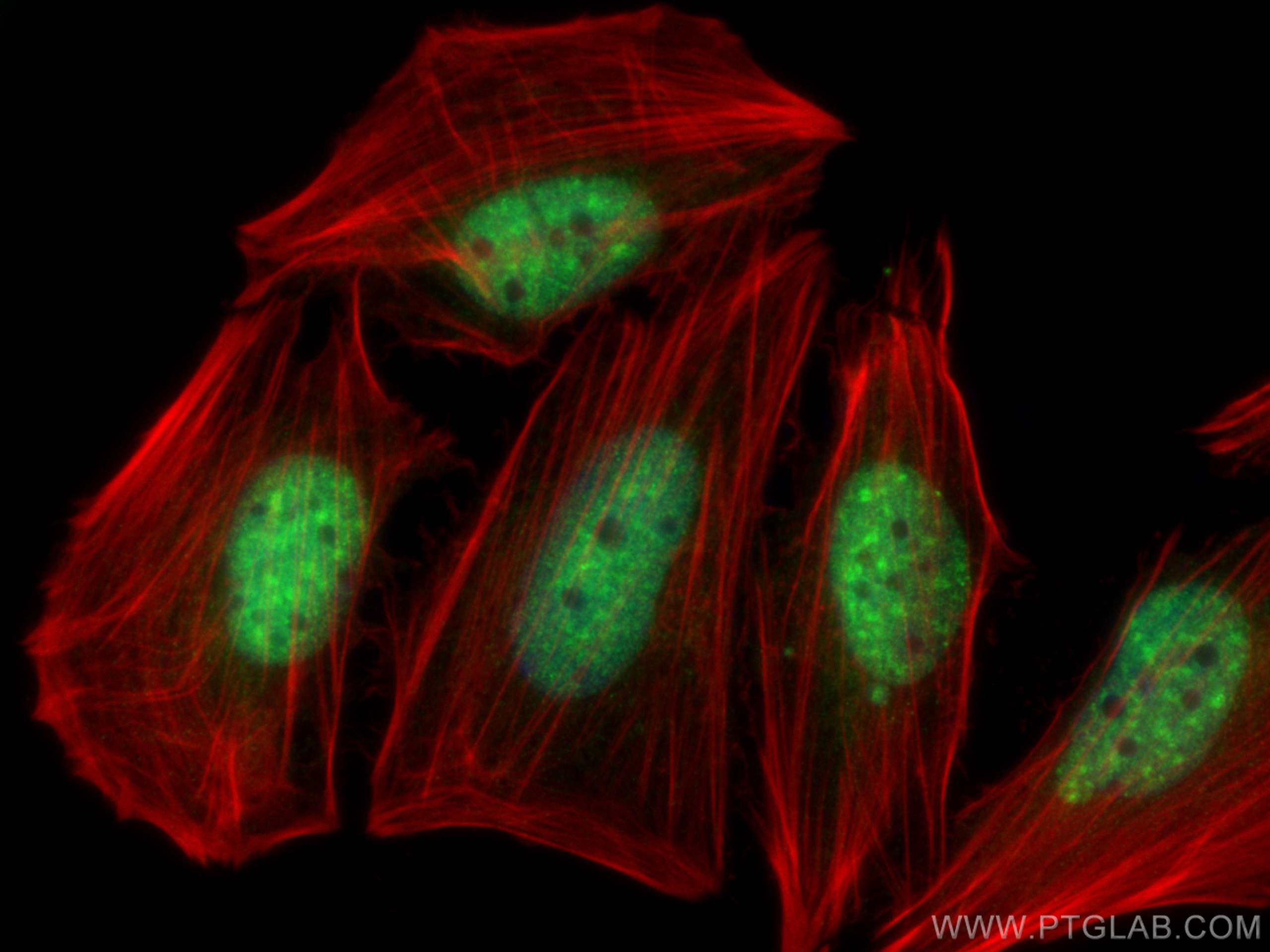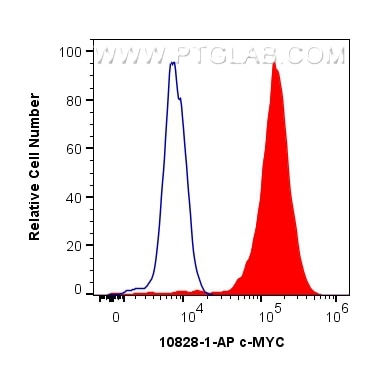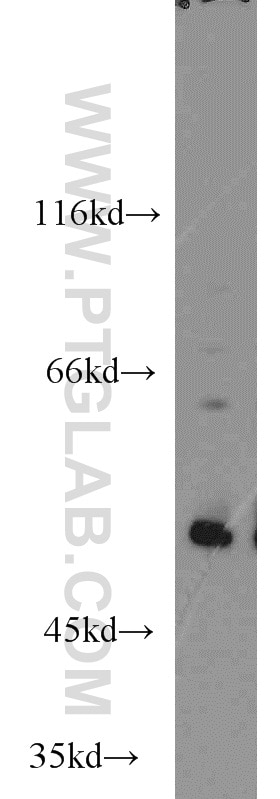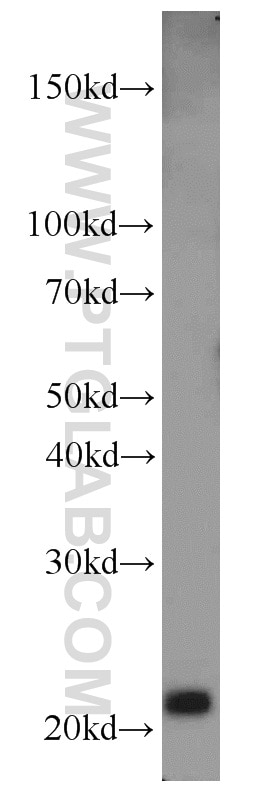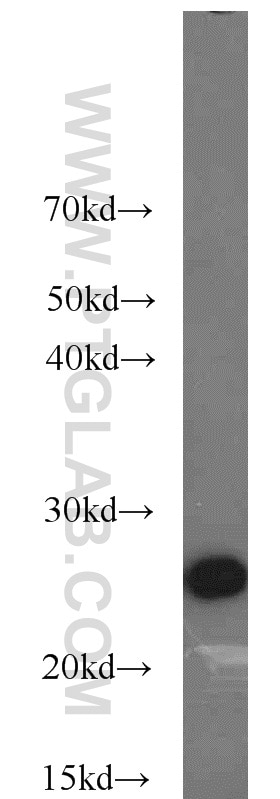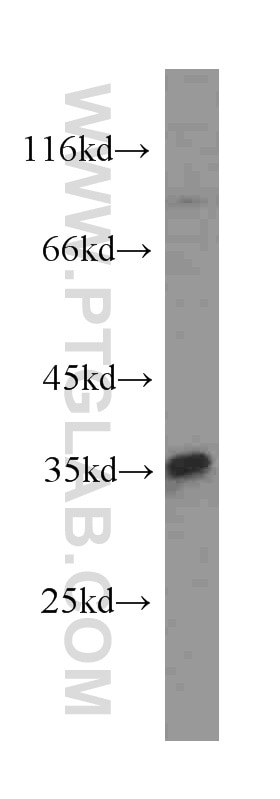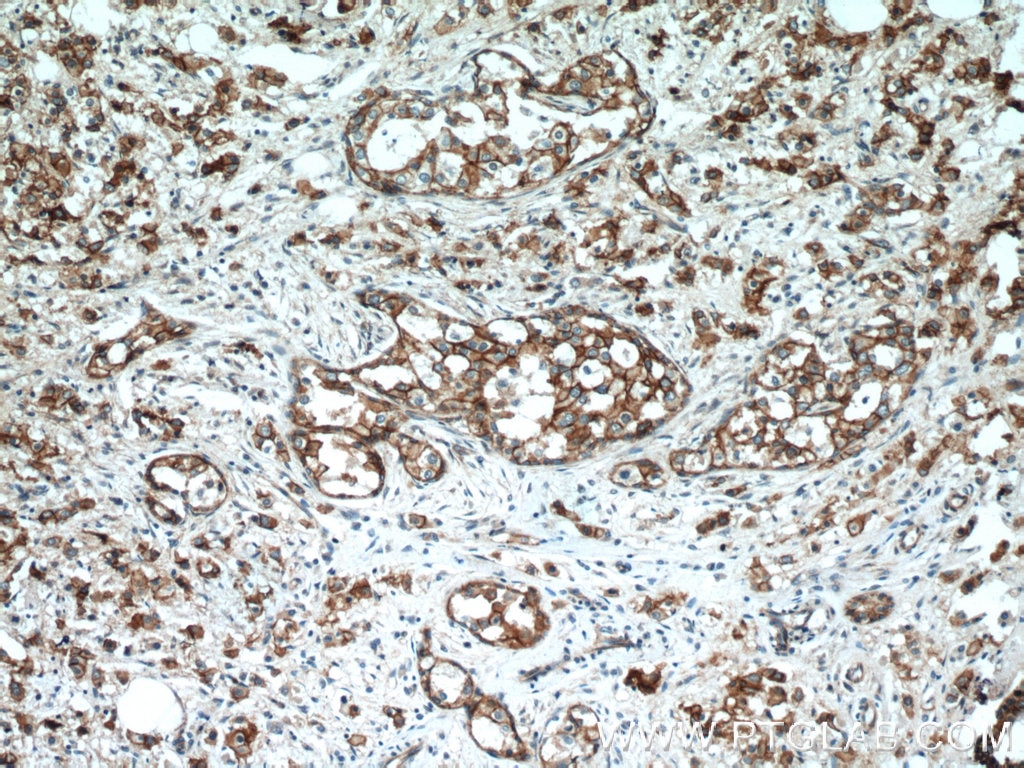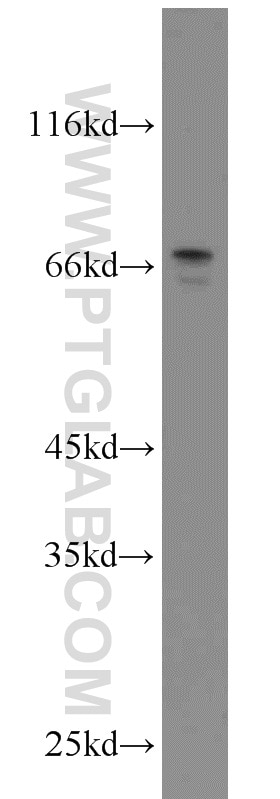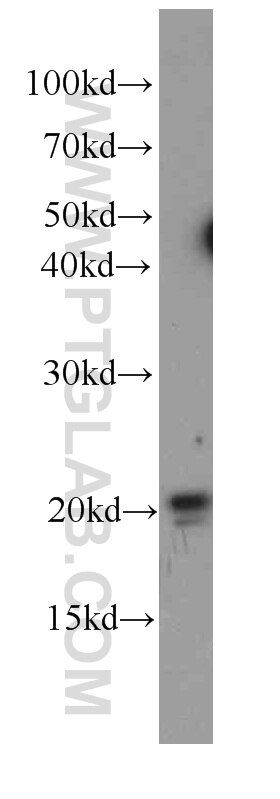- Featured Product
- KD/KO Validated
c-MYC Polyklonaler Antikörper
c-MYC Polyklonal Antikörper für WB, IF/ICC, FC (Intra), IP, ELISA
Wirt / Isotyp
Kaninchen / IgG
Getestete Reaktivität
human und mehr (4)
Anwendung
WB, IF/ICC, FC (Intra), IP, CoIP, ChIP, ELISA, EMSA
Konjugation
Unkonjugiert
Kat-Nr. : 10828-1-AP
Synonyme
Galerie der Validierungsdaten
Geprüfte Anwendungen
| Erfolgreiche Detektion in WB | HT-29-Zellen, A549-Zellen, BxPC-3-Zellen, HeLa-Zellen, HepG2-Zellen, HL-60-Zellen, humanes Plazenta-Gewebe, Jurkat-Zellen, Jurkat-Zellen und Raji-Zellen., Raji-Zellen, SH-SY5Y-Zellen, SW 1990-Zellen |
| Erfolgreiche IP | MCF-7-Zellen |
| Erfolgreiche Detektion in IF/ICC | Saos-2 cells, HEK-293-Zellen, U2OS-Zellen |
| Erfolgreiche Detektion in FC (Intra) | HeLa-Zellen |
Empfohlene Verdünnung
| Anwendung | Verdünnung |
|---|---|
| Western Blot (WB) | WB : 1:2000-1:12000 |
| Immunpräzipitation (IP) | IP : 0.5-4.0 ug for 1.0-3.0 mg of total protein lysate |
| Immunfluoreszenz (IF)/ICC | IF/ICC : 1:200-1:800 |
| Durchflusszytometrie (FC) (INTRA) | FC (INTRA) : 0.40 ug per 10^6 cells in a 100 µl suspension |
| It is recommended that this reagent should be titrated in each testing system to obtain optimal results. | |
| Sample-dependent, check data in validation data gallery | |
Veröffentlichte Anwendungen
| KD/KO | See 25 publications below |
| WB | See 570 publications below |
| IF | See 37 publications below |
| IP | See 21 publications below |
| CoIP | See 15 publications below |
| ChIP | See 12 publications below |
Produktinformation
10828-1-AP bindet in WB, IF/ICC, FC (Intra), IP, CoIP, ChIP, ELISA, EMSA c-MYC und zeigt Reaktivität mit human
| Getestete Reaktivität | human |
| In Publikationen genannte Reaktivität | human, Hausschwein, Huhn, Maus, Ratte |
| Wirt / Isotyp | Kaninchen / IgG |
| Klonalität | Polyklonal |
| Typ | Antikörper |
| Immunogen | c-MYC fusion protein Ag1263 |
| Vollständiger Name | v-myc myelocytomatosis viral oncogene homolog (avian) |
| Berechnetes Molekulargewicht | 49 kDa |
| Beobachtetes Molekulargewicht | 62-65 kDa, 50 kDa |
| GenBank-Zugangsnummer | BC000141 |
| Gene symbol | MYC |
| Gene ID (NCBI) | 4609 |
| Konjugation | Unkonjugiert |
| Form | Liquid |
| Reinigungsmethode | Antigen-Affinitätsreinigung |
| Lagerungspuffer | PBS mit 0.02% Natriumazid und 50% Glycerin pH 7.3. |
| Lagerungsbedingungen | Bei -20°C lagern. Nach dem Versand ein Jahr lang stabil Aliquotieren ist bei -20oC Lagerung nicht notwendig. 20ul Größen enthalten 0,1% BSA. |
Hintergrundinformationen
Function
c-Myc (also known as Myc), together with l-Myc and n-Myc, belongs to the Myc family of transcription factors. c-Myc has a basic helix-loop-helix leucine zipper domain and through heterodimerization can bind and regulate the transcriptional activity of genes, either by repression or activation. It is a key player in the regulation of cell growth and cell cycle progression and acts as a proto-oncogene.
Tissue specificity
c-Myc is ubiquitously expressed in almost all cell types and its expression positively correlates with tissue proliferative capacity. c-Myc is also expressed during embryogenesis and is upregulated in many cancer types.
Involvement in disease
· Upregulated in many cancer types, especially in aggressive, poorly differentiated tumors.
· Mutations in the MYC gene and breakpoint translocations within the MYC gene cause Burkitt lymphoma.
Isoforms
There are 3 different isoforms of c-Myc: c-Myc1, c-Myc2, and c-MycS (PMID: 16260605). They differ in molecular size, can be preferentially expressed during cell growth, and are reported to be functionally distinct. The 50kDa band recognized by antibody is the native form of MYC, while the other bands, between 60-70kDa, are the phosphorylated form of MYC (PMID: 12189186).
Post-translational modifications
c-Myc is subject to various post-translational modifications, including phosphorylation, acetylation, and ubiquitinylation (PMID: 16987807), which regulate its activity.
Cellular localization
c-Myc localizes to the nucleus but can also be present in the cytoplasm of certain cancer types.
Protokolle
| Produktspezifische Protokolle | |
|---|---|
| WB protocol for c-MYC antibody 10828-1-AP | Protokoll herunterladen |
| IF protocol for c-MYC antibody 10828-1-AP | Protokoll herunterladen |
| IP protocol for c-MYC antibody 10828-1-AP | Protokoll herunterladen |
| FC protocol for c-MYC antibody 10828-1-AP | Protokoll herunterladen |
| Standard-Protokolle | |
|---|---|
| Klicken Sie hier, um unsere Standardprotokolle anzuzeigen |
Publikationen
| Species | Application | Title |
|---|---|---|
Signal Transduct Target Ther MDIG-mediated H3K9me3 demethylation upregulates Myc by activating OTX2 and facilitates liver regeneration
| ||
Signal Transduct Target Ther Overexpression of CIP2A is associated with poor prognosis in multiple myeloma. | ||
Gastroenterology Nucleolar HEATR1 upregulated by mTORC1 signaling promotes hepatocellular carcinoma growth by dominating ribosome biogenesis and proteome homeostasis | ||
Cancer Cell p53 Is a Master Regulator of Proteostasis in SMARCB1-Deficient Malignant Rhabdoid Tumors.
| ||
Cell Metab Efferocytosis induces macrophage proliferation to help resolve tissue injury.
|
Rezensionen
The reviews below have been submitted by verified Proteintech customers who received an incentive for providing their feedback.
FH Molly (Verified Customer) (05-02-2023) | The antibody worked well for western blotting following the recommended protocol.
|
FH Anna-Maria (Verified Customer) (08-13-2019) | This antibody worked as expected for western blotting
|
FH Christine (Verified Customer) (11-13-2018) | The antibody worked better than the Abcam c-Myc antibody. However, I did not get clear nuclear staining but rather a mix of nuclear staining with cytoplasmic staining. This could be due non-optimized conditions.
|
FH Claudio (Verified Customer) (12-14-2017) | We tested the antibody in IHC/IFL on mouse brain tumors that showed c-myc upregulation at the mRNA level.
|
